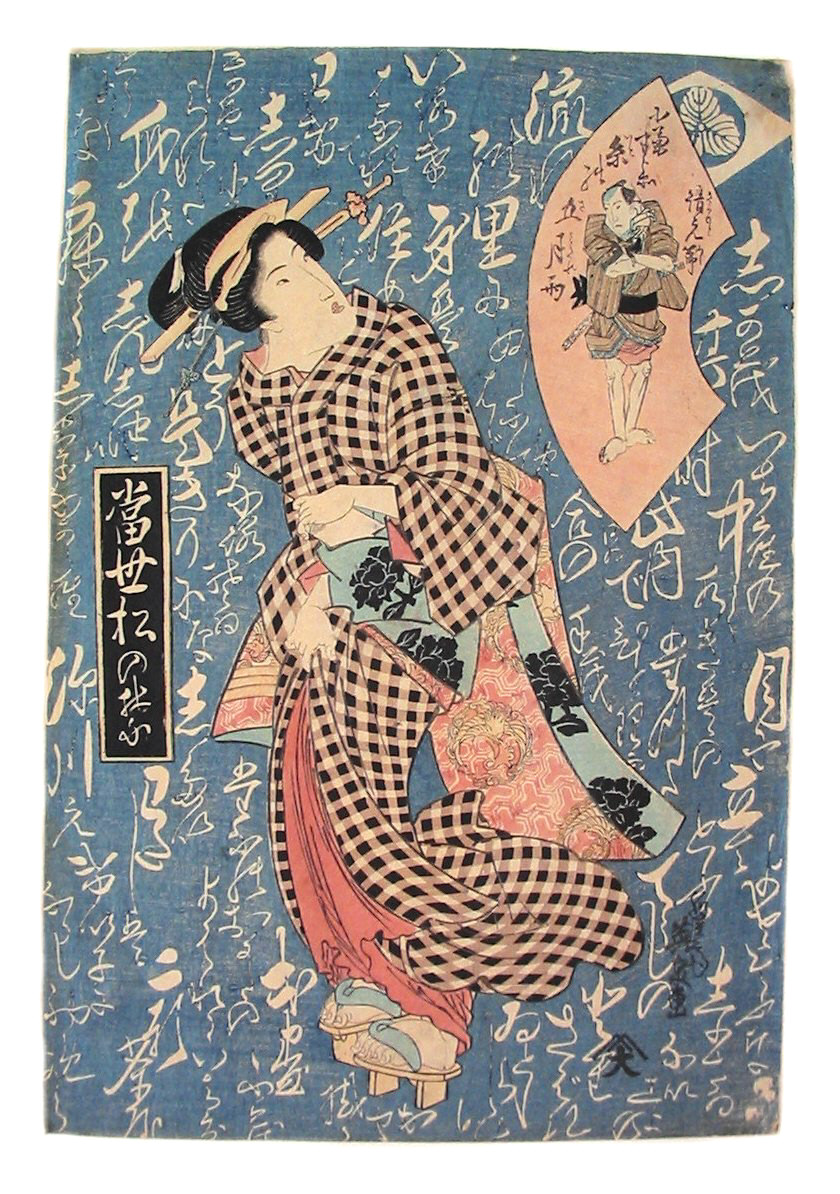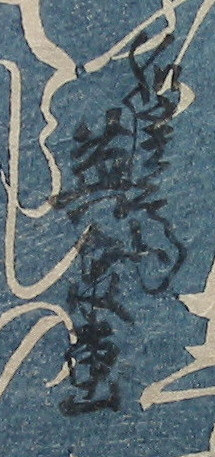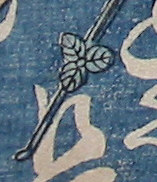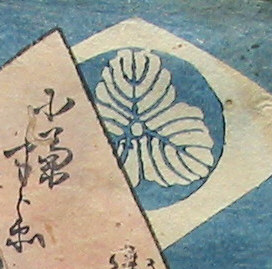 |
JAPANESE PRINTS
A MILLION QUESTIONS
TWO MILLION MYSTERIES
Ukiyo-e Prints浮世絵版画 |
|
formerly Port Townsend, Washington now Kansas City, Missouri |
|
Keisai Eisen |
|
渓斎英泉 |
|
1790-1848 |
|
A Beauty Representing Contemporary Joruri |
|
Series Title: Tosei matsu no ha "Modern Pine Needles" |
|
当世松の葉 |
|
Print Size: 14 3/4" x 10" |
|
Mat Size: 20" x 16" |
|
Date: Mid to late 1820s |
|
Signature: Keisai Eisen ga
渓斎英泉画 |
|
Publisher: Joshuya Kinzō
|
|
上州屋金蔵 |
|
|
|
Condition: Good color. Two small paper losses in the lower right corner. Slight soiling. Professionally matted and hinged. |
|
ORIGINALLY $780.00 NOW ON SALE FOR $480.00 SOLD! |

|
|
According to the Rietberg Museum catalogue the figure in the fan cartouche may represent the hero of a particular joruri play while the characters in the background are identified as the lyrics to that particular performance. Illustrated: Masterpieces of Ukiyoe from the Rietberg Museum Zurich, page 120, number 208, left hand panel. |
| As an aside: I recently realized that I had made a typo repeated several times over a couple of pages misspelling the name Rietberg. I corrected it. That led me to a search of information about the Rietberg and found out that the main building is the Villa Wesendonck which was owned by patrons of Richard Wagner. Wagner stayed there and is said to have been so smitten with his hostess and as a result was inspired to compose "Tristan and Isolde." |
 HOME
HOME |


